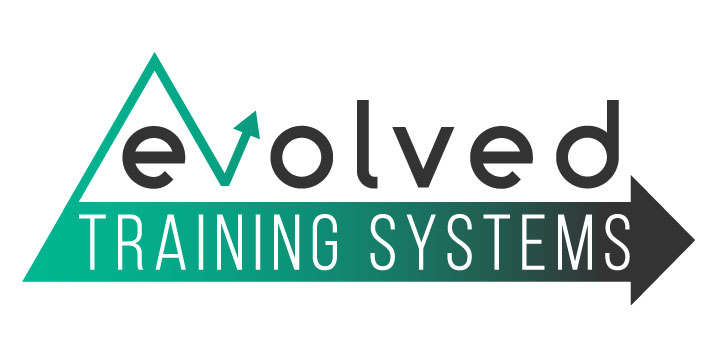SUMMARY
1. Structured planning of your training is vital to progress. If you aren’t making desirable improvements with all the time and effort you put in, you need to keep reading.
2. The new cycles of the Evolved Programs will be different than anything prior.
3. Metric-Based “Repeating” movements provide structure and a way to track progress week to week
4. Accessory movements change weekly to keep things interesting without sacrificing trackable improvements
5. The new “mesocycle” format allows for PLANNED weekly changes in reps and loading in the Original Evolved Program
6. The new “mesocycle” format allows for PLANNED weekly changes in total accumulated volume and fatigue management in the Evolved PHYSIQUE Program
7. The specific mesocycle characteristics chosen for each program will manipulate the variables most closely associated with the objectives for each program
——————
To get the results you deserve for your hard work and time commitment, you need to train with purpose. If you show up to the gym with only a vague idea of what you want to do (or no idea at all), you may find yourself making no progress for months or years.
If you show up to the gym and know what you want to do, but it’s always random and lacks a progressive plan, you will likely find yourself unable to achieve the results you want. The Evolved programs provide purpose, structure and quality to ensure that you make tangible progress in each training cycle.
Both of the Evolved Programs utilize a concept we call “Metric-Based Movements.” This is the basic structure that ensures the training is working and creating progress week to week. These exercises repeat weekly with a plan and approach that allows for the tracking and assessment of variables. The accessory movements will change weekly and provide some much needed respite from the somewhat monotonous and dedicated approach to the metric-based movements.
The new cycles of the Original Evolved Daily Program and the Evolved Physique Program are going to be different than any of the prior cycles in many ways, and very similar in other ways. Here is a general outline of what you can expect and how to implement the protocol to maximize your results.
The Original Evolved Daily Program
Wave-Loading Linear Periodization
The below structure is specific to the “Metric-Based Movements”
Each of these 4-5 week periods is called a “mesocycle”
Week 1 – Higher reps
Week 2 – Moderate/High reps (heavier weight than week 1)
Week 3 – Moderate/Low reps (heavier weight than week 2)
Week 4 – Lower reps (heavier weight than week 3)
Week 5 –Deload (this *may* be skipped in the first mesocycle only)
Week 6 – Repeat mesocycle at heavier weights than first mesocycle
Why use Wave-Loading Linear Periodization?
In the pursuit of strength, muscle gain, performance and aesthetic prowess, increasing the weight on the bar week to week is the ultimate goal. However, it is nearly impossible to continually add weight to a movement every week if the reps stay the same. Especially as you become more advanced, you are closer to your genetic potential, and those gains become harder to come by (it takes on the appearance of an asymptote, if you are familiar with graphs).
The Wave-Loading model allows for this increase in weight by a coordinated decrease in reps.
In prior Evolved cycles, we’ve utilized longer Linear Periodized cycles of 12+ weeks. This meant that the athlete would need to begin the cycle with weights that are much lighter to ensure that they could add load or reps week to week for 12+ weeks.
While this format is extremely effective in its own right, training should constantly EVOLVE, and we now see this as being a bit less efficient than the shorter dedicated 4-5 week mesocycles.
With the shorter 4-5 week periods, you can begin the mesocycle at heavier weights, which allows for additional stimulus session to session. When the mesocycle ends, one deload week will get you prepared and ready to repeat the mesocycle at heavier loading.
This allows for more hard weeks of training as opposed to the longer linear model in which the first few weeks of the cycle are so light that the real “hard work” doesn’t even begin until the latter part of the cycle.
——————
The Evolved PHYSIQUE Daily Program
Volume Accumulation Periodization
The below structure is specific to the “Metric-Based Movements”
Each of these 4-5 week periods is called a “mesocycle”
Week 1 – Low volume of total sets per exercise
Week 2 – Low/Moderate volume of total sets per exercise
Week 3 – Moderate/High volume of total sets per exercise
Week 4 – HIGH volume of total sets per exercise
Week 5 – Deload (this *may* be skipped in the first mesocycle only)
Week 6 – Repeat mesocycle at heavier weights than first mesocycle
Why use Volume Accumulation Periodization?
In the pursuit of Physique, scientific research has defined volume of work as the number one most vital characteristic correlated with aesthetic improvements (i.e. increased hypertrophy).
The general idea of volume accumulation is ultimately to increase strength. Let’s assume you performed squats for 3×8 in week 1 at a moderately challenging weight. Four weeks later, you performed 6×8 at the same loading. After successfully making 6 sets, you will feel quite confident increasing the weight and decreasing volume back to 3×8, right? In fact, I bet the 6×8 squats were quite fatiguing. You might even be excited to drop back down to 3 sets and increase the weight. Mental and physical “deload” is needed to make progress over time!
Logic and intuition tell us that you can’t increase volume forever. The Fitness/Fatigue model (Bannister et al, 1976) states what should be obvious:
Fitness improves by doing more fitness up until a point where doing too much fitness causes excessive fatigue, and then things start going backwards as the body is unable to compensate. Rest and recovery are needed as a “reset” so that we can then start accumulating volume again.
Think of the paradigm like this:
Week 1 – Volume is low, such that we are just above maintenance volume. Maintenance volume is SUPER LOW (like 3-5 sets per muscle group per week). So don’t worry, you won’t lose gains. You are setting yourself up for a successful mesocycle.
Week 2 – Raring to go, feel so recovered and full of energy. Increase volume slightly. This “week 2” volume is now providing an ADAPTATION because it’s MORE THAN WEEK 1
Week 3 – Continued increases in volume which is now providing us an increased stimulus over the volume load from week 2. This level of volume should be the “sweet spot” where we are maximizing gains and without accruing excessive fatigue.
Week 4 – Further increases in volume. Now are doing a lot. We are getting quite sore and starting to feel a bit fatigued. We begin to wonder if we can do more next week. This is the state of “over-reaching” that stimulates maximum growth, but also incurs significant fatigue. Therefore, a deload week must follow to re-sensitize the body to lower volumes and maximize the ROI when we begin accumulating volume again.
Over 4 weeks, we have successfully provided an INCREASE IN STIMULATION EVERY WEEK. If we had merely done the same level of volume every week, the body would find a homeostasis and wouldn’t be creating an additional stimulus each week. The body is now primed for continued progress, in both strength and muscle mass.
———————
Terms and Nomenclature
RIR = Reps in Reserve
Generally, you want begin the FIRST mesocycle with 2-3 RIR on the repeated movements. As the “macrocycle” progresses, the weights will increase and the RIR will decrease.
RIR will also be used to define work output level of the accessory movements week to week
Deload
This is the period of time in which we reset the bodies’ adaptation processes. Deloads generally consist of decreasing one, two or all three variables of “Volume, Frequency, and Intensity.” Evolved programs will generally decrease Volume OR Intensity and leave frequency the same.
The DELOAD will never be lower than maintenance volume of work. This means that you can be sure that you will NOT lose any gains, and more than likely, you will be setting yourself up for more motivation and productivity in the next mesocycle.
Ramp-up Sets
These are the sets the precede the “work sets.” In the programming, only work sets are listed. It’s vital that you have a solid understanding of how to implement ramp-up sets while limiting fatigue.
As a quick example, if you are performing 3×10 at 100 lbs for “work sets” you would not want to do 90 lbs for 10 reps as a ramp-up set, as this would cause significant fatigue. The goal is to prioritize the loading and performance of the work sets.
Please read THIS ARTICLE ON RAMP-UP sets to improve understanding of the concept




